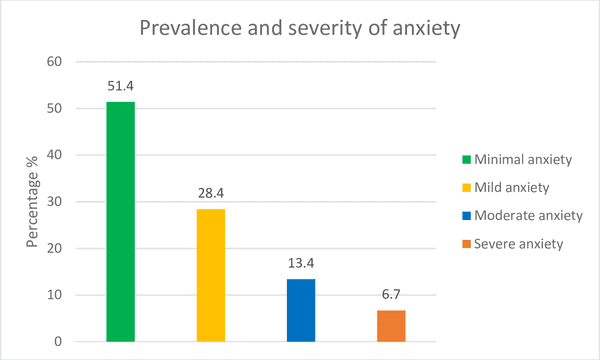Social Anxiety Test
3 Min Free Anxiety Assessment
Who Can Benefit From This Social Anxiety Assessment?
The Social Anxiety Assessment can benefit anyone who suspects they may be experiencing symptoms of social anxiety disorder or social phobia. This assessment may be particularly useful for individuals who feel anxious or uncomfortable in social situations, have difficulty making friends or maintaining relationships, avoid social situations, or experience physical symptoms such as sweating or trembling in social situations. The assessment can help individuals better understand their symptoms and determine whether they may benefit from seeking support from a mental health professional. It’s important to note that this assessment is not intended to diagnose social anxiety disorder or any other mental health condition, but rather to provide a starting point for further evaluation and treatment if needed

Social Anxiety Assessment Accuracy:

The accuracy of a Social Anxiety Assessment can depend on several factors, including the honesty and accuracy of the responses provided by the user, and the individual’s current state of mental health. It’s essential to note that a social anxiety assessment is not a substitute for a formal diagnosis by a licensed mental health professional, and it is best used as a screening tool to identify potential symptoms and risk factors for social anxiety disorder.
It’s essential to remember that while an assessment can provide useful information, it should not be used in isolation to diagnose or treat social anxiety disorder. A licensed mental health professional should be consulted for a formal diagnosis and personalized treatment plan.
Types of Anxiety Assessment
Liebowitz Social Anxiety Scale (LSAS):
Assesses fear and avoidance of social situations. The LSAS consists of 24 items, and individuals rate their fear and avoidance on a Likert scale.
Social Phobia Inventory
(SPIN):
Assesses fear and avoidance in social situations. The SPIN consists of 17 items, and individuals rate their anxiety on a Likert scale.
Social Interaction Anxiety Scale (SIAS):
Assesses anxiety in social interactions. The SIAS consists of 20 items, and individuals rate their anxiety on a Likert scale.
Mini-Social Phobia Inventory (Mini-SPIN):
Assesses social anxiety symptoms. The Mini-SPIN consists of three items, and individuals rate their symptoms on a Likert scale.
Behavioral Avoidance Test
(BAT):
This is a behavioral assessment that involves observing an individual’s behavior in social situations to identify specific anxiety symptoms and triggers.
Structured Clinical Interview for DSM-5 (SCID):
Assesses for the presence of social anxiety disorder. The SCID involves a structured or semi-structured interview with a mental health professional.
Treating Social Anxiety:
Social anxiety disorder can be treated effectively with a combination of psychotherapy, medication, and self-care strategies. Here are some examples of treatment options:
- Cognitive-Behavioral Therapy (CBT): This is a type of talk therapy that focuses on changing negative thought patterns and behaviors that contribute to social anxiety. CBT may involve exposure therapy, where individuals gradually face feared social situations to desensitize them to anxiety triggers.
- Selective Serotonin Reuptake Inhibitors (SSRIs): These are a type of medication commonly prescribed to treat social anxiety disorder. SSRIs help regulate serotonin levels in the brain, which can improve mood and reduce anxiety symptoms.
- Beta-Blockers: These medications can be used to manage physical symptoms of anxiety, such as rapid heartbeat and trembling, by blocking the effects of adrenaline.
- Mindfulness-Based Interventions: Mindfulness techniques, such as meditation and deep breathing, can help individuals manage anxiety symptoms by increasing present-moment awareness and reducing stress.
- Social Skills Training: This type of therapy can help individuals build confidence and improve social skills by practicing communication and assertiveness techniques.
- Support Groups: Joining a support group can provide individuals with social support and a sense of community, which can help reduce feelings of isolation and improve mood.

